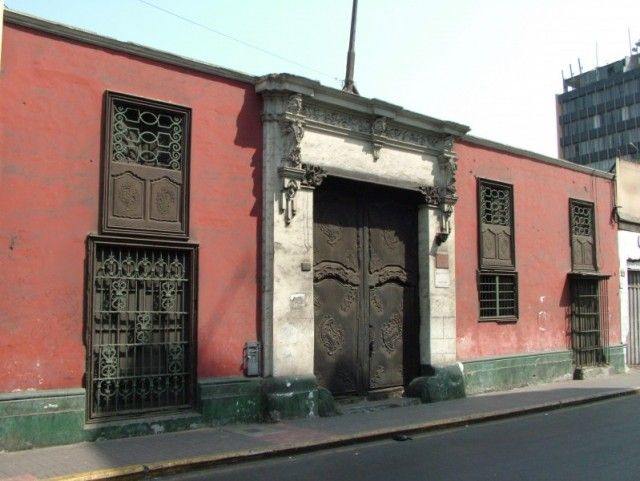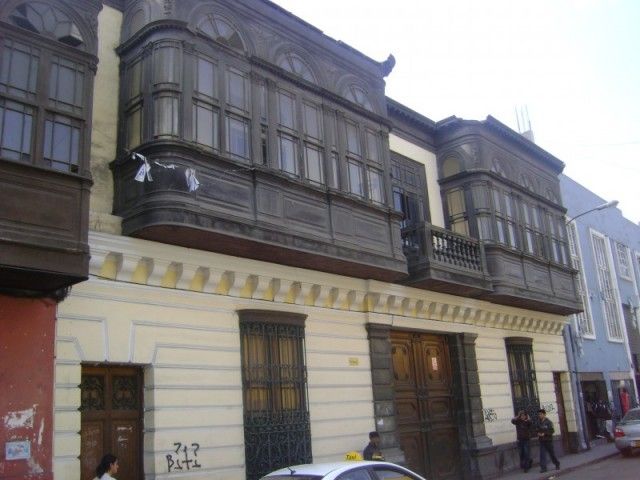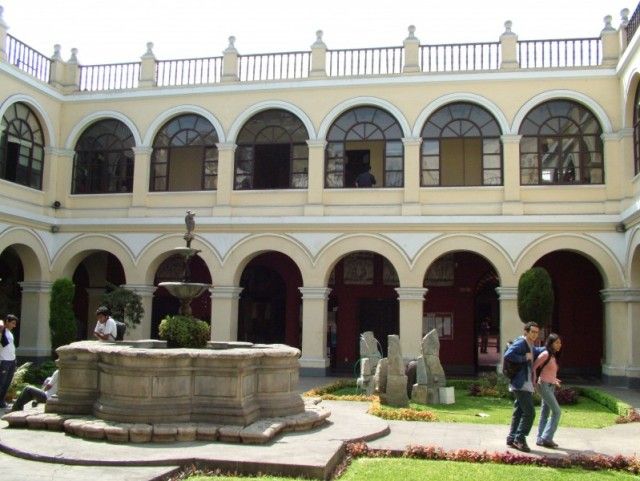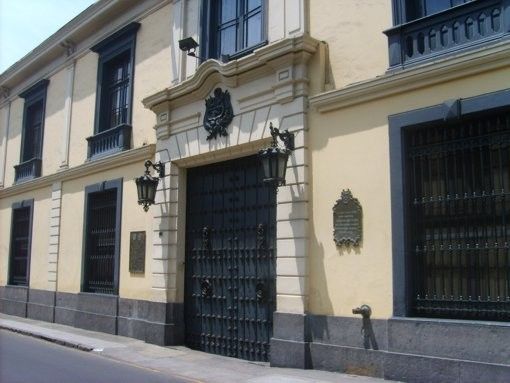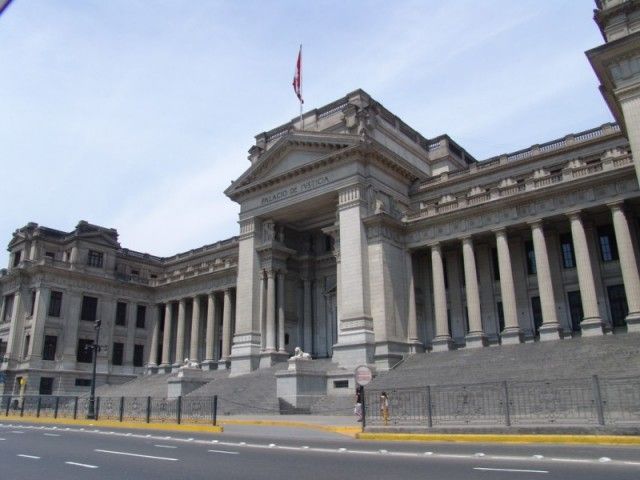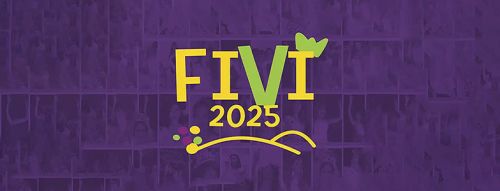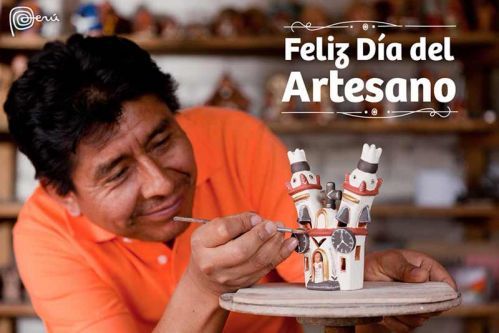- Peru Guide
- Peruvian Visa Types
- Public Holidays & Festivals
- Peru Info
- Culture & Entertainment
- Legal Stuff
- Customs Regulations & Info
- How many days did I get?
- Tourist Visa extension in Peru
- Peruvian Overstay Fine
- International Document for Antecedentes Peru
- Paying Administration Charges
- Permit to Sign Contracts
- Interpol - Ficha de Canje
- Travel Permit
- Subsanacion - Submitting documents
- Extending a Migraciones deadline
- Residence visa extension
- Renewal Carné de Extranjería
- Update Migraciones information
- Carné replacement
- Marrying in Peru
- Driver's License in Peru
- Police Clearance Certificate Peru
- Travel Authorization for Minors
- Finding a Job in Peru
- Domestic Workers in Peru
- Labor Regulations Peru
- Air Passenger Rights
- Safety, Security & Travel Advice
- Shopping in Peru
- Stay Connected
- Business Guide
- Earthquakes
- Emergencies & Help
- History of Peru
- Education, Teaching & Schooling
- Glossary of Terms
- Lima Guide
- Travel & Sights
- Food
- Money
- Events
- Opinion
- Media
- Peru Guide
- Peruvian Visa Types
- Public Holidays & Festivals
- Peru Info
- Culture & Entertainment
- Legal Stuff
- Customs Regulations & Info
- How many days did I get?
- Tourist Visa extension in Peru
- Peruvian Overstay Fine
- International Document for Antecedentes Peru
- Paying Administration Charges
- Permit to Sign Contracts
- Interpol - Ficha de Canje
- Travel Permit
- Subsanacion - Submitting documents
- Extending a Migraciones deadline
- Residence visa extension
- Renewal Carné de Extranjería
- Update Migraciones information
- Carné replacement
- Marrying in Peru
- Driver's License in Peru
- Police Clearance Certificate Peru
- Travel Authorization for Minors
- Finding a Job in Peru
- Domestic Workers in Peru
- Labor Regulations Peru
- Air Passenger Rights
- Safety, Security & Travel Advice
- Shopping in Peru
- Stay Connected
- Business Guide
- Earthquakes
- Emergencies & Help
- History of Peru
- Education, Teaching & Schooling
- Glossary of Terms
- Lima Guide
- Travel & Sights
- Food
- Starter & Appetizer
- Sandwiches
- Soups
- Main Courses
- Salsas, Sauces & Dips
- Desserts
- Snacks
- Drinks & Beverages
- Peruvian Cheese
- Fruits
- Vegetables
- Aji - Chili Peppers
- Grains, Coffee, Beans & Nuts
- Common Herbs
- Other Ingredients
- Money
- Peru Guide
- Peruvian Visa Types
- Public Holidays & Festivals
- Peru Info
- Culture & Entertainment
- Legal Stuff
- Customs Regulations & Info
- How many days did I get?
- Tourist Visa extension in Peru
- Peruvian Overstay Fine
- International Document for Antecedentes Peru
- Paying Administration Charges
- Permit to Sign Contracts
- Interpol - Ficha de Canje
- Travel Permit
- Subsanacion - Submitting documents
- Extending a Migraciones deadline
- Residence visa extension
- Renewal Carné de Extranjería
- Update Migraciones information
- Carné replacement
- Marrying in Peru
- Driver's License in Peru
- Police Clearance Certificate Peru
- Travel Authorization for Minors
- Finding a Job in Peru
- Domestic Workers in Peru
- Labor Regulations Peru
- Air Passenger Rights
- Safety, Security & Travel Advice
- Shopping in Peru
- Stay Connected
- Business Guide
- Earthquakes
- Emergencies & Help
- History of Peru
- Education, Teaching & Schooling
- Glossary of Terms
- Lima Guide
- Travel & Sights
- Food
- Starter & Appetizer
- Sandwiches
- Soups
- Main Courses
- Salsas, Sauces & Dips
- Desserts
- Snacks
- Drinks & Beverages
- Peruvian Cheese
- Fruits
- Vegetables
- Aji - Chili Peppers
- Grains, Coffee, Beans & Nuts
- Common Herbs
- Other Ingredients
- Money
- Lima Guide
- Culture Guide
- Historical Buildings
Historical Buildings
Lima, nowadays is a bustling, chaotic and quite noisy city, has a rich historical and architectural heritage. When Francisco Pizarro founded Lima in 1535 on an existing indigenous settlement, he had explicit orders by the Spanish crown on how to create and organize the city. They based the design and layout of Limas historical Center on the model of cities in Spain, especially Seville. The same applies for the first Colonial houses in Lima.
Initially, the first mansions were all built block (Spanish = Cuadra) by block around Plaza Mayor in a chessboard style and with specific rules as determined by Francisco Pizarro (exact length of one block = 400 feet / 122m and a precise width of the streets = 40 foot / 12.2m). During the Colonial times, the Spanish immigrants developed their own unique architectural style. The origins of this style were very similar to the typical Arabic-Moorish architecture in Spain. The settlers had to adapt to the local environment like earthquakes or the inferiority of building materials, and so soon a very characteristic architectural style developed.
Good examples of unique architectural factors are the famous balconies of Lima; most of them closed balconies with jalousies, of Moorish origin but with an absolutely distinctive Lima style and character. Lima known as the "City of Kings" and "City of Gardens" was soon famous for these extraordinary balconies and known as the "City of Balconies". Lima had so many balconies that nobody ever thought they would be some day something special. The principal reason for building closed balconies was that the first immigrants thought it would be inappropriate for their women to be seen from a window, an open balcony, or when going outside. Therefore, closed balconies like in North-Africa were built, allowing the high society ladies of Lima to see what was going on outside but without being seen.
House of the Thirteen Coins
Historical BuildingsThis single-story residence originally belonging to the López-Flores family dates back to the mid 18th century. Built in clear rococo style the excellent design fits perfectly to the architectural ...Congress Palace of the Republic of Peru
Historical BuildingsThe Congress Palace is bordered by two squares: the Plaza Bolivar in front and the Plaza Victoria in the back. When Peru became independent in 1821 there was no space for a legislative in Lima, bec...House of General César Canevaro
Historical BuildingsThe original house on this property was built by Captain Villegas (governor of Callao) in 1752. In 1818 the building was bought by the Lobatón Laos family. Its current design dates back to the midd...National School of Fine Arts
Historical BuildingsThis beautiful preserved convent from 1603, used to be the "Centro de Estudios del Real Colegio Secular de los Agustinos de San Ildefonso" and the "Convent de las Monjas Recogidas" (the Convent of ...House of the Money
Historical BuildingsIn April 1561 Diego Lopez de Zuñiga asked the Spanish Crown for the authorization to establish a "currency house" in Lima to bring order to the various currencies issued in the country. The permiss...Justice Palace
Historical BuildingsThe Justice Palace is a building characteristic for Lima’s modernization and remodeling process at the beginning of the 20th century. Inspired by the Justice Palace in Brussels, though much smaller...Peru Newsflash
New lizard species discovered in Peru
There is still so much new to find out about and see in Peru. Just recently Peruvian scientists discovered a…Peru has the second-worst drivers in the world
For those living and driving in Peru it comes to no surprise. A recent study by Compare the Market, an…Machu Picchu reopens for the first time after the social outbreak
The Ministry of Culture of Peru decided to re-open Machu Picchu after it was closed on January 21 because of…Peru extends the state of emergency in 44 districts
The Peruvian government extended the “state of emergency” in 44 districts of the central departments of…
Peru Event Calendar
Mon Tue Wed Thu Fri Sat Sun 1234561819Date : Wednesday, 19 March 2025202122232425262728293031Upcoming Events in Peru
18Apr20Apr01May03MayMore in the Peru Event & Entertainment Calendar
Latest Content...
- Tourist Attractions & Sights in Peru
Machu Picchu
- International Schools in Peru
International Christian School of Lima - ICS Lima
- Peruvian Visa Types
Peruvian Digital Nomad Visa
- Laws, Norms, Legal Codes & Decrees
Legislative Decree No. 1582 (Modification of the Peruvian Foreigner Law, Nov 2023)
- Peruvian Cheese
Queso Rojo de Lluta
- Peruvian Cheese
Peruvian Queso Andino
- Peruvian Cheese
Peruvian Quesillo
- Peruvian Cheese
Peruvian Queso Mantecoso
- Peruvian Cheese
Peruvian Queso Paria
- Peruvian Cheese
Peruvian Queso Fresco
- Legal Stuff
Extension of a Migraciones deadline
- Legal Stuff
Subsanacion - Submitting documents
- Legal Stuff
Amnesty for Migraciones fines
- Legal Stuff
Replacement for a lost, stolen or damaged carné
Latest Video
Long Reads...
- Peruvian Archaeology
The Mystery of the Nazca Lines in Peru
In the 1920s, when people first flew across southern Peru, they made an astonishing discovery. Stretching below them,… - Peruvian Personalities & Founders
Francisco Pizarro González (1474-1541)
Francisco Pizarro, a peasant from Spain, was one of the least well-equipped conquerors in history. However, in the name… - Peruvian Archaeology
The colorful Fabrics and Textiles of Peru
Europe’s first knowledge of Peruvian textiles was acquired following the Spanish invasion of Peru in 1532, when the… - Peruvian Legends, Myths & Tales
The Jeweled Frog and the Condor
By a quiet pond, at the side of a cloud-topped mountain in Peru, lived a small green frog and his large green family.… - Peru Info
Peruvian Economy
The Peruvian economy is an emerging, social market economy highly dependent on foreign trade and classified as an upper…
Contact us | Editorial Ethics | Support | T&C | Copyright | Privacy | Discussions & Submissions | Cookies Policy | GDPR | CCPA | DMCA


